There is one area that is often overlooked in our cleaning escapades, that is the air. Just think about all the little particles of smoke, pollen, pet dander or even volatile organic compounds making rounds under the radar. When in large quantities, these sneaky little ninjas compromise the purity of your air, ultimately causing diseases and those awful allergic reactions. Traditionally, we’d try and solve this by ventilating, but to be honest, that doesn’t really do the job half the time. This is where air purifiers come in.
An air purifier’s fundamental work is to improve the overall quality of your air by filtering out all the dust, smoke and pollen particles that you can’t really see around you. It does this by focusing on a single room, passing the air through a system of filters to make it as clean as possible. Most air purifiers today are moderately good in their job. For them to be most efficient, they are made to handle large living spaces, like your living room. They are also made to be quiet as possible, such that you can set them up in your bedroom, while at the same time, cost-efficient, such that you may get multiple units to handle your whole living space.
With all these properties in mind, we have evaluated the many air purifiers out there, to ultimately compile a list that would make your selection process a little more fulfilling below.
Top 10 Air Purifiers Of 2020 Reviewed
1. GermGuardian 3-in-1 Air Purifier
 Air Purifier For Kitchen
Air Purifier For Kitchen
This air purifier makes use of 3 cleaning techniques to clear the air of pollutants. It features a UV-C light that is used to kill airborne germs such as influenza, rhinovirus, staph, and pneumonia. The light also activates Titanium Dioxide to decompose any remaining molecules.
The purifier has a primary filter which is a HEPA filter for capturing dust mites, pet dander, pollen, and other particles as small as 0.3 microns. And it also makes use of a pre-filter and charcoal layer to ensure that the HEPA filter lasts a good long while. This layer catches the larger dust particles as well as pet hair while the activated charcoal absorbs the odors. The CADR is 100+ and is Certified Energy Efficient.
The Germ Guardian is ideal for small to medium-sized rooms. You get UV-C control (turning it on and off) as well as a filter change indicator so you always know when it requires cleaning. Plus, the fan has 3 speeds so you can customize the level of cleaning and noise of the machine. However, some people have found the LED lights to be too bright when they’re sleeping. Also, the machine blows the clean air through the sides. Not a big deal for some but it may be for you.
Pros:
- Certified Energy Efficient
- 3 levels of cleaning
- Affordable
Cons:
- Blue LED light is too bright at night
- Clean air is blown out through the sides of the purifier
- Replacement filters are expensive
2. Honeywell True HEPA Allergen Remover
 Air Purifier For Dust
Air Purifier For Dust
If you need the air purifier to cover a larger area than 390 square feet, then this model from Honeywell should do it. This unit is recommended for rooms as large as 465 square feet. It features 4 air cleaning levels – the germ, generally clean, allergen, and turbo. Also, it has an automatic shut-off feature that you can set for 2, 4, or 8 hours. It filters the air of a 465-square foot room 5x per hour and has a 300 CADR rating for smoke, 320 for dust, and 300 for pollen. Plus, this unit is ENERGY STAR qualified by the EPA. And if you want to put this in your bedroom, you have nothing to worry about. Not only is this quiet (-er compared to the 50250-S) on its lowest setting, it has a light dimmer.
However, this is more expensive than 50250-S. Also, it requires you to replace the filters more often and there are 3 HEPA filters in this baby. This machine only comes in black so it’s something to consider if you want an air purifier that will go well with your decor.
Pros:
- Much quieter but more powerful than the Honeywell 50250-S
- Energy Star Qualified (consumes less power)
- Automatic shut-off feature
Cons:
- Requires replacing the HEPA filter once a year; need 3 HEPA filters to work
- Only comes in black
- Expensive filter replacements
3. Coway Mighty Air Purifier
 Air Purifier For a Baby
Air Purifier For a Baby
This compact-sized air purifier is a crowd-favorite for many reasons. It has a 4-stage filtrations system. The pre-filter captures large particles of dust, fur, and hair. This particular filter is washable. The second filter is an odor filter that makes use of advanced activated carbon for capturing VOCs, pet odors, cooking odors, etc. The third is a True HEPA filter that traps particles as small as 0.3 microns including tobacco smoke, pollen, and dust. And then there’s the Vital Ionizer that uses negative ions to clean the air.
The machine is able to monitor the quality of air and will show you the status of the air through a vivid color change. Also, it will automatically adjust its speed setting based on the quality of the air. Plus, this sensor can shut down the fan if it has not detected any pollutants in the air for 30 minutes, enabling you to save energy. Speaking of energy, the purifier is Energy Star certified. The machine is certified by AHAM with a CADR of 233 for smoke, 246 for dust, and 240 for pollen.
The coverage of the machine is up to 361 square feet. While the air purifier has been tested as safe by the California Air Resources Board (CARB), it may still be concerning to some that there’s a built-in ionizer in this device. Also, it has a blue sensor light that’s very bright with no way to turn it off at night. This unit is also a bit on the noisy side.
Pros:
- 4-stage filtration system
- Air quality indicator
- Energy Star certified
Cons:
- Built-in ionizer
- Bright blue light
- Noisy
4. Honeywell 50250-S True HEPA Air Purifier
 Air Purifier For a Baby
Air Purifier For a Baby
Honeywell is a well-known brand in the air purifier industry. Their units are always top quality and the 50250-S is no different. This particular model features a patented 360-degree air intake and discharges which means you can put it anywhere in your room and get the same efficiency. It manages to cover large rooms up to 400 square feet. It also has two filters. There’s a carbon activated pre-filter for catching large particles of dust, pet hair, and lint as well as to help reduce odor. And then there’s the HEPA filter that has CADR ratings of 250 for smoke, dust, and pollen.
Also, this filter has been AHAM certified to be used in rooms up to 390 square feet. The purifier also has a service indicator, called the Intelli-Check™ Electronic Filter Indicator, that lets you know when it’s time to clean or change the filters. By the way, you’ll be glad to note that the HEPA filters don’t need changing for 3 years as long as you vacuum it regularly. With all the good it’s got going, there’s gotta be something bad right? Well, the noise of the machine is a bit on the loud side and the light indicating fan speed is very bright in a dark room.
Pros:
- Can cover up to 400 square feet
- True HEPA filter
- CADR ratings of 250 across the board
Cons:
- Very loud
- Blue light is very bright
5. Levoit LV-H132 Air Purifier
 Air Purifier For a Baby
Air Purifier For a Baby
The Levoit LV-H132 Air Purifier features three filters. There’s the pre-filter that captures large particles such as dust and pet dander. There’s the primary HEPA filter that captures pollutants as small as 0.3 microns which includes dust, pollen, smoke, mold spores, etc. And then there’s the activated carbon filter that removes odors.
The fan has 3-speed settings. The unit comes with a 2-year warranty. The LV-H132 is a compact unit that has easy-to-use controls which includes a nightlight option. This Levoit model is ideal for small to average-sized bedrooms up to 86 square feet. Setting this all up is so easy. For the price, this air purifier is well worth your money.
However, keep in mind that the nightlight is actually blue so it won’t be ideal for the bedroom. And the buttons aren’t always as responsive as we’d like – i.e. all the time.
Pros:
- Affordable
- Quiet
- Compact size
Cons:
- For small rooms only
- Blue nightlight
- At times, buttons are unresponsive
6. Honeywell QuietClean Tower Air Purifier
 Air Purifier And Ionizer
Air Purifier And Ionizer
Yes, this is another Honeywell unit but you really can’t fault us because they continuously produce high-quality air purifiers. The HFD-120-Q is an air purifier that features a tower design. It has an LED touch button control panel with three speeds (which equals to 3 cleaning levels), an electronic filter checks indicator, and an on/off oscillation control. The machine has a CADR rating of 100 for dust, 110 for smoke, and 132 for pollen. This unit can cover a room of up to 170 square feet, able to effectively circulate the air up to 5 times an hour. This purifier is very quiet and solidly built.
Some owners have had their unit for more than 5 years and it is still going strong. But that’s not what we love about this. One of the most expensive things about air purifiers are the filters. Replacing them is going to cost you a lot of money. But this model makes use of permanently washable filters. That’s right. Just wash them, dry them, put them back, and the air purifier is good to go again. Plus, this is Energy Star rated so you don’t have to worry much about power consumption.
However, the HEPAClean filter used by the manufacturer is not a true HEPA filter and is only passable at removing smoke particles and odor. Also, it makes use of a built-in ionizer. To be fair, it is rated as California EPA Air Resources Board as producing an ozone emission concentration less than 0.050 parts per million which mean that it’s safe. Nonetheless, it is still a cause for concern for some.
Pros:
- Very quiet
- Lasts for years
- Permanently washable filters
Cons:
- Has a built-in ionizer
- Not a True HEPA filter
- Not as good at capturing smoke particles
7. Rabbit Air MinusA2 Ultra Quiet HEPA Air Purifier
 Air Purifier To Eliminate Smoke
Air Purifier To Eliminate Smoke
The Rabbit Air MinusA2 series is not your average air purifier. There’s a lot of customizing involved with the models of this series. This is an exceptionally quiet air purifier that can cover rooms up to 300 square feet, changing the air completely 3 times per hour. It makes use of a six-filter system which includes the usual pre-filters, one of which is washable, to catch large particles. Then there’s the true HEPA filter. And then, there’s the custom filter provided by Rabbit Air. You can choose from four different filters based on your specific needs – Germ Defense, Toxin Absorber, Odor Remover, and Pet Allergy. Then, you get a carbon filter to trap odors. And lastly, there’s an ionizer (already tested and certified as safe by the California Air Research Board) that you can choose to use (or not).
That’s not all. The Rabbit Air MinusA2 can be mounted on a wall and you can customize the front panel to feature the artwork of a famous artist such as Van Gogh, thereby turning this appliance into a decorative piece. Aside from the customization, this model has an air-quality sensor that changes colors to let you know when the air needs cleaning. There’s also a filter monitor to let you know when it requires cleaning or changing. The MinusA2 is Energy Star Certified, using up an estimated 95 watts when at its highest setting. However, the unit is not AHAM certified so the manufacturer may not have followed industry-standard testing procedures. Also, it does not have a timer (though it has a sleep mode and an auto mode).
Pros:
- 6-filter system
- Decorative piece
- Allows customization
Cons:
- Built-in ionizer
- Not AHAM certified
- No timer
8. Winix 5300-2 Air Purifier
 Air Purifier To For Pets
Air Purifier To For Pets
The Winix 5300-2 is an air purifier that is HEPA-certified and features a 3-stage cleaning system. It has a true HEPA filter and a carbon filter just like most of our other picks. However, it also makes use of PlasmaWave technology to break down odors, allergens, chemical vapors, and other pollutants at a molecular level. The machine is AHAM verified for 360 square feet and a CADR rating of 243 for dust, 246 for pollen, and 232 for the smoke.
The unit makes use of Smart Sensors to monitor the air quality in the room (which is shown on an LED indicator display) and adjusts the fan settings accordingly. The Winix 5300-2 also has a filter replacement indicator, an LED auto dim feature, and 4 fan speeds.
However, it only comes in one color (a bit unattractive one at that). Also, it’s not energy efficient. While the auto mode is great when it goes to sleep mode when you do, it’s not so ideal that you have to keep the light on in a room to ensure it stays at the speed you want it to.
Pros:
- PlasmaWave technology
- Smart sensors
- LED auto-dim feature
Cons:
- Only one color option
- Not energy efficient
- The auto mode requires you to keep it in a room with a light on if you don’t want it in sleep mode
9. Dyson Pure Cool Link WiFi-Enabled Air Purifier
 Air Purifier And Fan Combo
Air Purifier And Fan Combo
This is one very expensive air purifier. Though to be honest, some air purifiers can set you as far back as $1500. However, in comparison to all our other picks, this unit does require you to put out some serious change. We admit that one of the reasons we picked this baby is due to the way it looks. It definitely isn’t like any other air purifier we’ve seen. But that’s not why it has a high price tag.
This unit is very high tech; you can control it with your smartphone AND Amazon Alexa. You can even get real-time reports on air quality. But that’s not all. Aside from cleaning your air using a 360° Glass HEPA filter that has a layer of activated carbon granules, this machine also cools you off in the summer by functioning as a fan. It is Certified Asthma and Allergy Friendly and Quietmark accredited. Because there are no blades in the fan, it’s very safe for curious fingers. There are other bonus features such as night-time mode, sleep timer, 10-speed settings, an automatic shut-off feature if it gets tipped over, and oscillation.
However, it’s not only the unit that’s expensive because the filter is high up there as well.
Pros:
- Powerful cooling fan
- Very quiet
- Works with smartphone and Alexa
Cons:
- Very expensive
- Replacement filters are also expensive
10. Healthmate HM-400 HEPA Air Filter Purifier
 Air Purifier For Allergies
Air Purifier For Allergies
For those who are really sensitive to odors or live in an environment with a high level of VOCs such as a farm or near a chemical plant, then you need the Austin Air HealthMate Standard HM-400. When it comes to removing odors on a molecular level, nothing beats this unit. It makes use of a 15-pound activated carbon and zeolite filter. It’s so good that FEMA and Red Cross use this machine for Ground Zero and surrounding areas after 9/11. Aside from the carbon filter, the unit also has a large particle pre-filter, a medium particle pre-filter, and a 60 square foot certified HEPA filter.
The HealthMate has 3 fan speeds and 360-degree intake. The body is solid, welded-steel with a durable powder coating. It even comes with casters to make it easy to move from one room to another. Now, this unit is very expensive; it is the most expensive one on our list. But it’s HEPA filter (which we all know is expensive) has a very long lifespan; you’ll only need to change it every 5 years. How about that? Plus, this unit can cover 1500 square feet.
Pros:
- Really gets rid of allergens and odors
- Can cover as much as 1500 square feet
- Easy to use
Cons:
- Very expensive
- Filters are half as expensive as the unit
- Noisy
Choosing The Best Air Purifier – The Ultimate Buying Guide
If you want to breathe easier and enjoy fresh air, there’s one good way to do it – get an air purifier. A good air purifier minimizes the number of irritants/pollutants in the air. However, not all air purifiers are made equal so choosing the best one that suits your family’s needs may not be as easy as it looks. To help you out, we’ve written a short but pretty informative guide on the specifications and features you should be on the lookout for.
Types of Air Purifiers
If you’re looking for an air purifier for your home, there are two types for you to choose from – portable and whole-home air purifiers.
Portable Air Purifiers: They are usually designed for cleaning the air in no more than one room at a time. Most air purifiers belong to this category and weigh from 10 to 25 pounds. Some feature a handle to make it easy to carry from one room to another. Some can stand on the floor while others can be placed on a table. Others may even feature wheels for increased portability.
Whole-Home Air Purifiers: On the other hand, they are attached to the ductwork or furnace inside the home so that it cleans the air that passes through. This type of air purifier is usually bought when you are building a home or buying a new furnace.
What kind of Filter should Your Air Purifier have?
Naturally, your air purifier should have at least one filter. But some actually have two or three workings together which means you don’t need to change the filters as frequent. And this equals less money spent over time.
Now, the primary filter in a good air purifier is the HEPA filter. HEPA stands for high-efficiency particulate air which can catch really incredibly small articles. In fact, according to the standard, a True HEPA filter must capture up to 99.97 percent of particles that are as small as 0.3 microns.
Some portable air filters come with a pre-filter that serves as a bodyguard to your primary filter. Its purpose is to catch the bigger particles which includes dust. The presence of this pre-filter lengthens the life of your HEPA filter, especially if you change it often.
Some air purifiers even have a second pre-filter which is also used to lengthen the life of the HEPA filter by catching small particles before it reaches the primary filter. It may also be used to catch odor molecules. For example, the Rabbit Air MinusA2 Ultra Quiet HEPA Air Purifier makes use of a six-filter system for cleaning the air.
Carbon filters usually require changing every three months while the primary filter requires changing once a year. Take note that true HEPA filters are expensive. The cost of filters generally ranges from $10 to $500. Fortunately, some filters are now washable which means you can use them multiple times before requiring replacement. The Honeywell HFD-120-Q QuietClean Tower Air Purifier uses permanently washable filters.
Should the Air Purifier Use an Ionizer?
An ionizer makes use of electrically charged ions to attract pollutants and particles in the air. However, some ionizers produce low levels of ozone which, according to experts, is a possible lung irritant. So, it’s probably in your best interest to get a purifier without this feature or one that can be turned off like the Rabbit Air MinusA2 Ultra Quiet HEPA Air Purifier.
What’s CADR?
CADR stands for a clean air delivery rate. It measures how fast an air purifier can clear the air of three of the most common air pollutants – dust, pollen, and smoke. A higher rating means a better air purifier because it cleans more air per hour. Air purifiers that have a CADR rating of 350 and above are excellent while those rated as less than 100 are of poor quality. Out of all of our picks, the Honeywell True HEPA Allergen Remover has the highest CADR rating (300 for pollen and smoke, 320 for dust).
What size should I get?
When choosing an air purifier, you need to consider the volume capacity that the manufacturer either specifies or make use of the measurements they provide. Below are some of the measurements used to help you determine size.
Square Footage: Is the size of the room that a manufacturer recommends can be “covered” by an air purifier. To ensure that your air purifier doesn’t get overstressed, get one that has a bigger coverage compared to the room that it will stay in.
CFM or Cubic Feet Per Minute: This is a rating used by some manufacturers to measure how much air is processed by the purifier every minute. Using this figure, you can calculate how many times the air purifier will suck in all of the air and purify it.
ACH is Short for Air change Per Hour: This measures how often the purifier will draw the air into the room through it. For example, an ACH rating of three would mean that the purifier would be able to draw the entire volume of air in the room three times per hour.
What other Features should I Look at?
Most air purifiers draw in the air by using a fan. However, some manufacturers opt to not include one to make a unit run more quietly. Instead, this kind of air purifier will just rely on nature – cleaning what air passes through the purifier due to the air circulation in the room. If you want an effective air purifier, you’ll need to purchase one with a fan.
You’ll also want to consider multiple fan speeds. This way, you can adjust the level of noise and “effectivity” of your air purifier according to your needs. You can set it to run slower while you’re sleeping or run higher during times when extensive cleaning is required such as during pollen season.
Some air purifiers come with timers that allow you to schedule how long the air purifier will run. You can even set the air purifier to run before you use a room so that you get clean air when you walk in. The Honeywell True HEPA Allergen Remover, for example, can be scheduled to turn off after 2, 4, or 8 hours of running.
A servicing indicator lets you know if you need to clean the air purifier or replace the filter. This also ensures that your air purifier stays effective and efficient. A full filter may cause your air purifier to stop working. Most of our picks, including the GermGuardian AC4825 3-in-1 Air Purifier, feature a filter change indicator.
Other extra features that you might be interested in carrying handles, dirt sensors, and remote controls. Carry handles enables you to easily move the unit from one room to the next while remote controls can let you program or adjust the settings of the unit from the other side of the room. A dirt sensor is a feature that enables your air purifier to detect the level of dust or dirt in the air and automatically adjust its fan speed accordingly. This particular feature can be found in most of our picks, including the Winix 5300-2 Air Purifier.


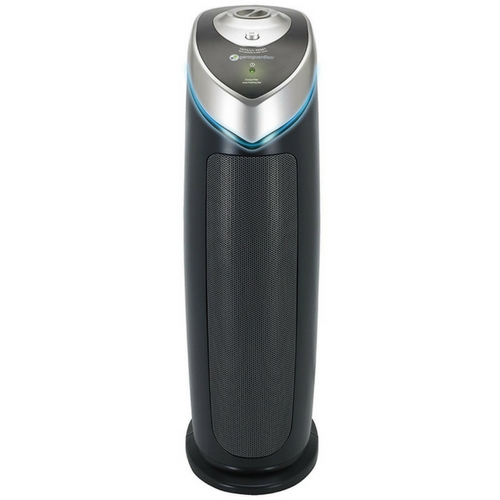
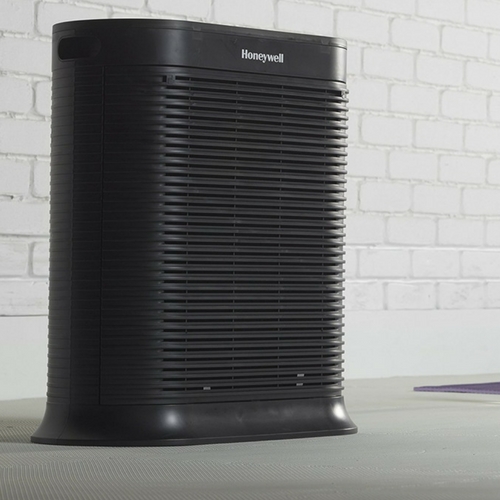
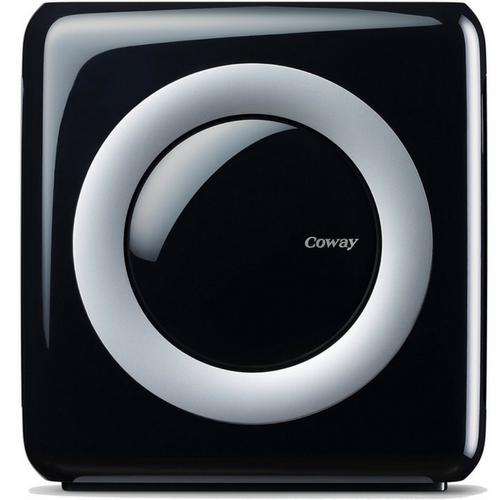
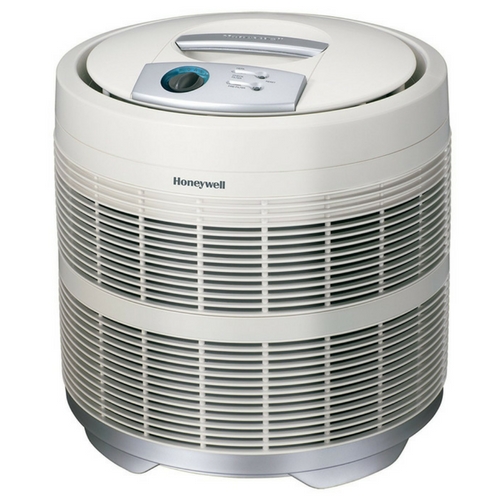
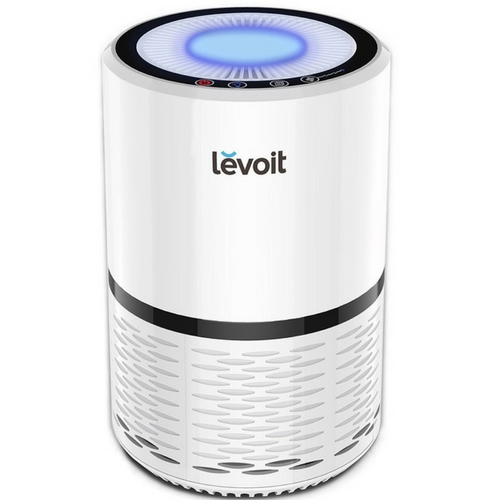
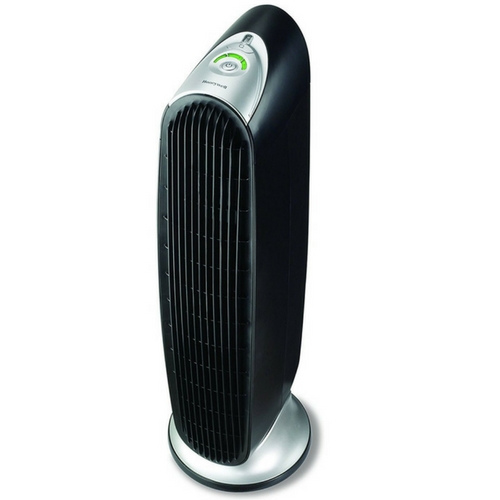
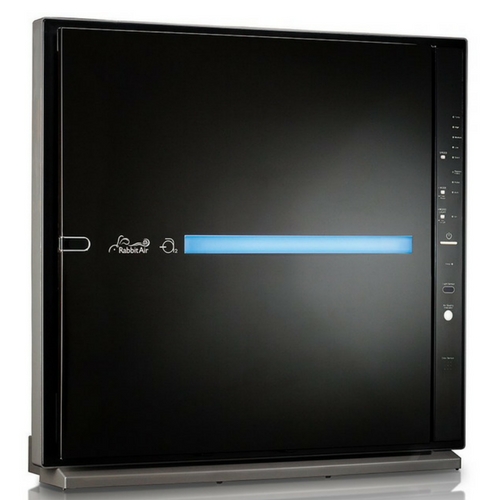
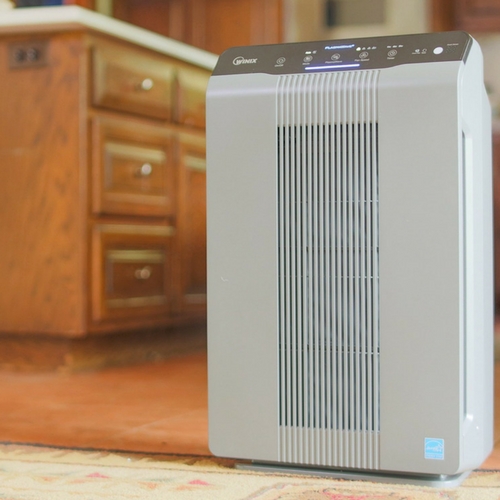
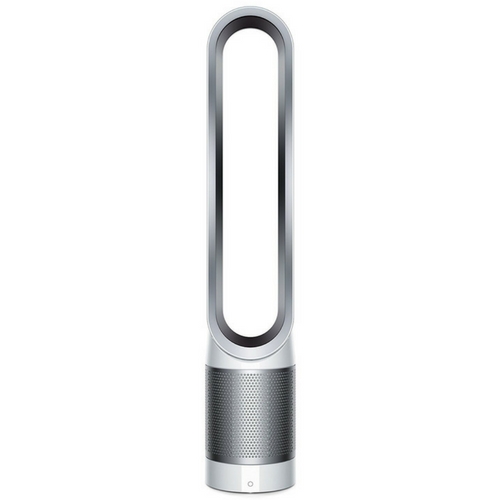
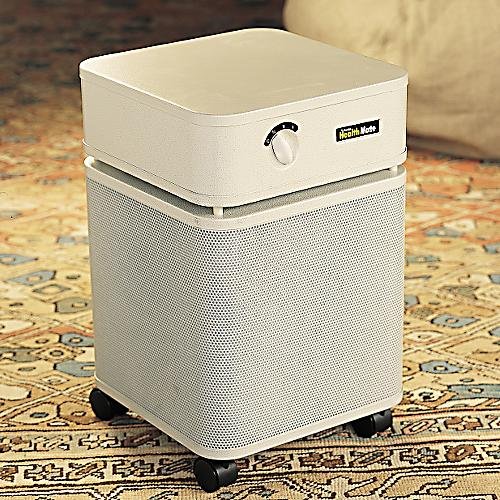
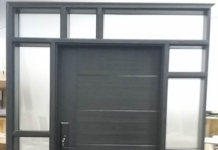
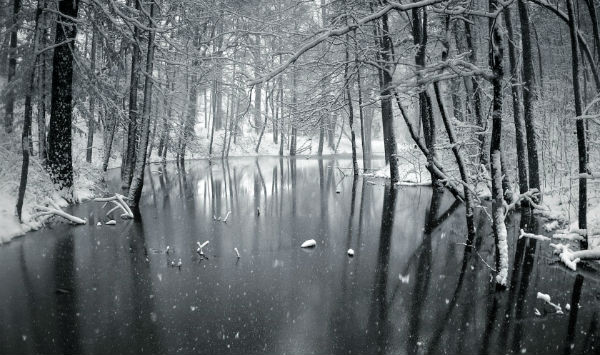
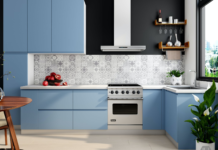
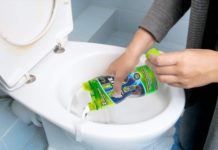
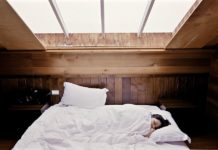
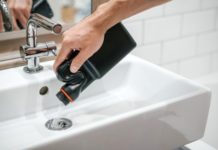





![Best Crochet Hooks for Beginners and Pros [2020 Update] best crochet books](https://www.awebtoknow.com/wp-content/uploads/2018/01/best-crochet-books-100x70.jpg)


